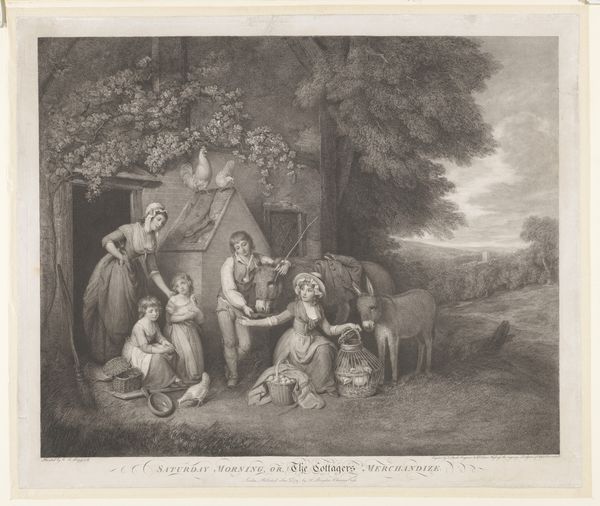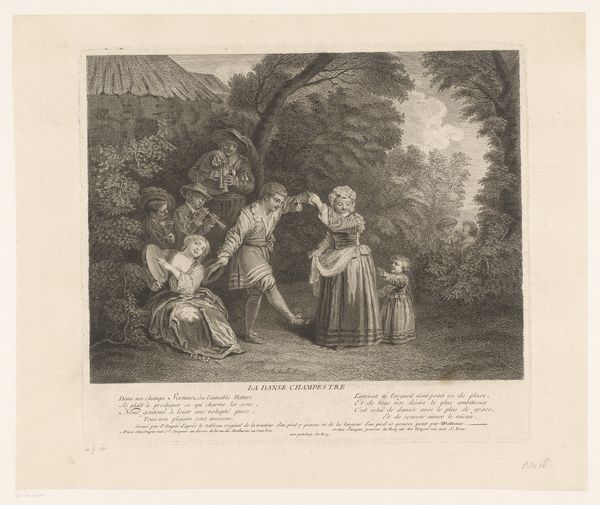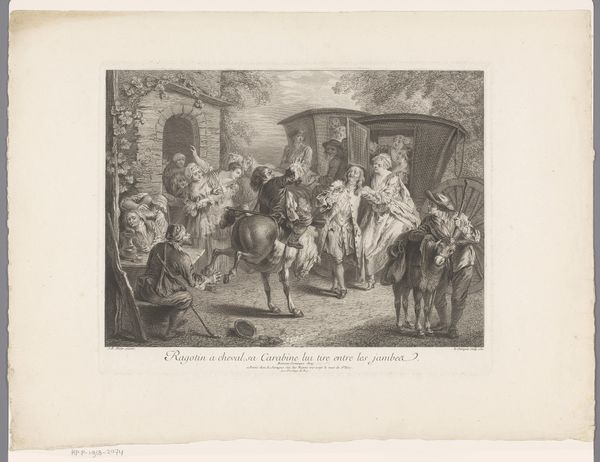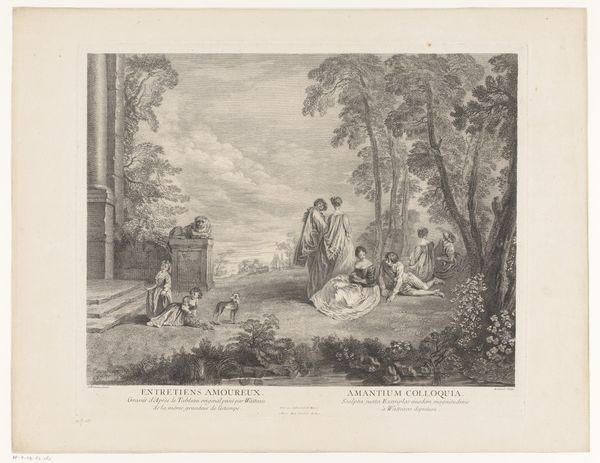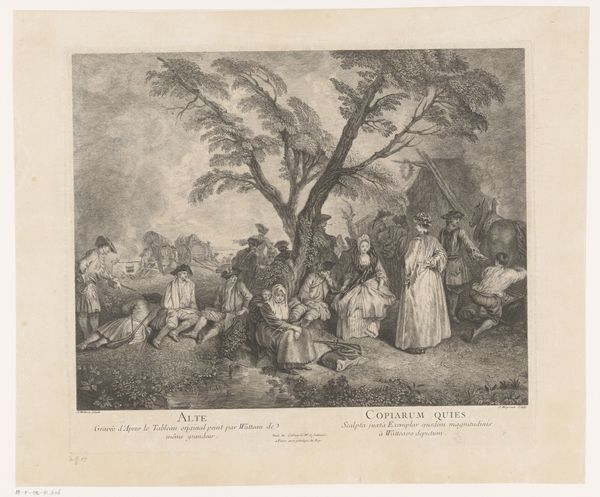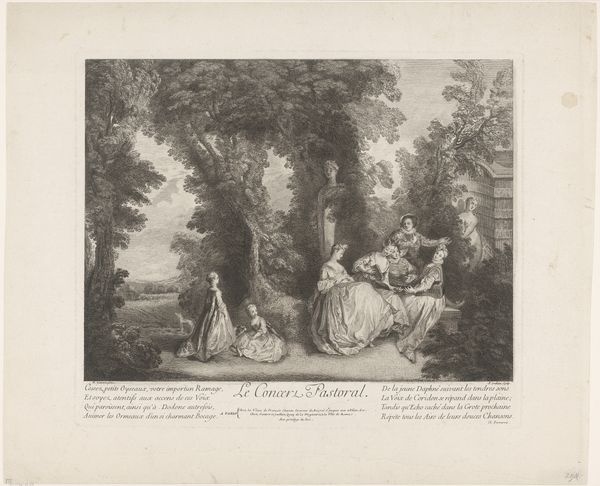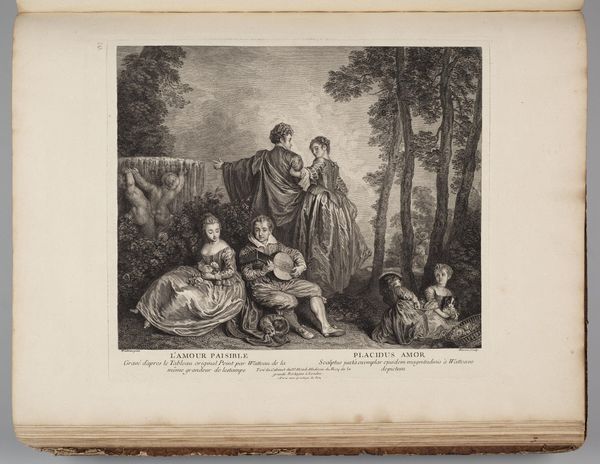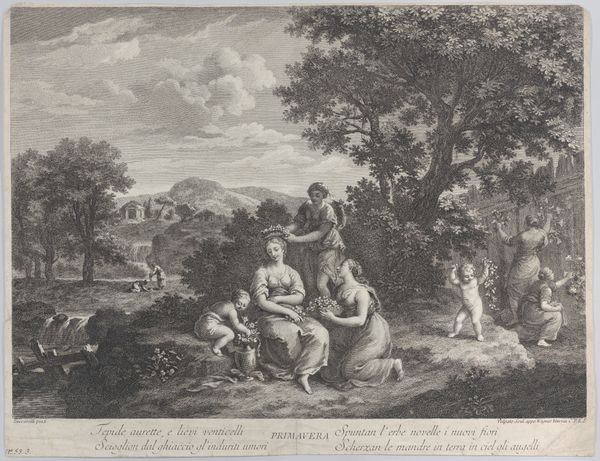
drawing, print, charcoal, engraving
#
drawing
#
narrative-art
# print
#
landscape
#
charcoal drawing
#
romanticism
#
genre-painting
#
charcoal
#
charcoal
#
engraving
Dimensions: height 512 mm, width 608 mm
Copyright: Rijks Museum: Open Domain
Curator: This is "Terugkeer van een vader bij zijn gezin," or, "Return of a Father to his Family," made in 1795, currently held at the Rijksmuseum. It’s a print, made using engraving techniques, likely based on an original charcoal drawing. Editor: Ah, it's got that lovely, almost melancholic feel that these late 18th century family scenes often carry, even amidst the apparent joy. It seems incredibly detailed for a print. Curator: The key element here is that intersection of labor and family. See the placement of the farming tools, a visual reminder of the father's work? It speaks volumes about the socio-economic structure, how domesticity is intimately tied to agricultural labor in that era. We should observe the artist's, William Nutter’s careful depiction. Editor: It's true; it grounds the romantic sentiment with the grit of reality. Though there is some stagecraft at play, look how deliberately each child is posed! But somehow the inclusion of the family’s animals - a cat, a pig - helps offset some of that theatricality and hint at the family’s rural authenticity. I wonder, what are they having for supper? Curator: Well, given the era and subject, likely a humble meal, sourced from the land they work. The artist wants us to consider these subjects not simply as individuals, but as actors in the agricultural system that defines their lives, whose dinner is tied to daily toil. Editor: You are probably right! But I do love how a moment of daily routine—this father's homecoming after toiling, perhaps is elevated, isn't it? In that return and reunion, there is a simple joy to be had. Curator: Precisely. That return wasn’t guaranteed in that era, but necessary for continued production. That cyclical notion speaks to a larger theme concerning community, familial dependence, and a moral vision for what labor produces and provides, doesn’t it? Editor: Absolutely, and beyond any formal consideration, I find the idea deeply resonant. It feels good, imagining that home scene... I’m going home to make my own return now! Curator: Then perhaps we’ve successfully connected the historical and social context with a little bit of that shared humanity, too! Thanks for being here.
Comments
No comments
Be the first to comment and join the conversation on the ultimate creative platform.
